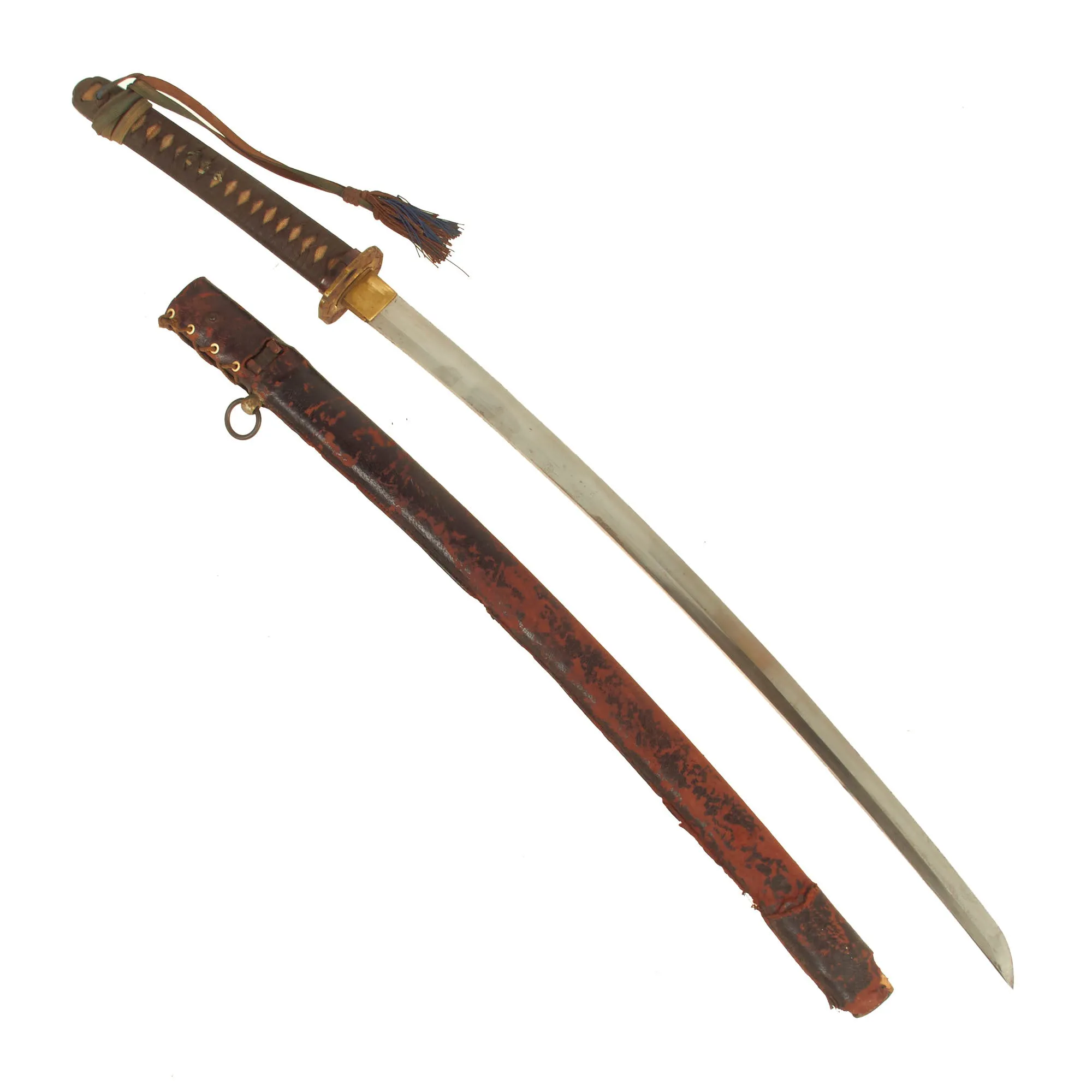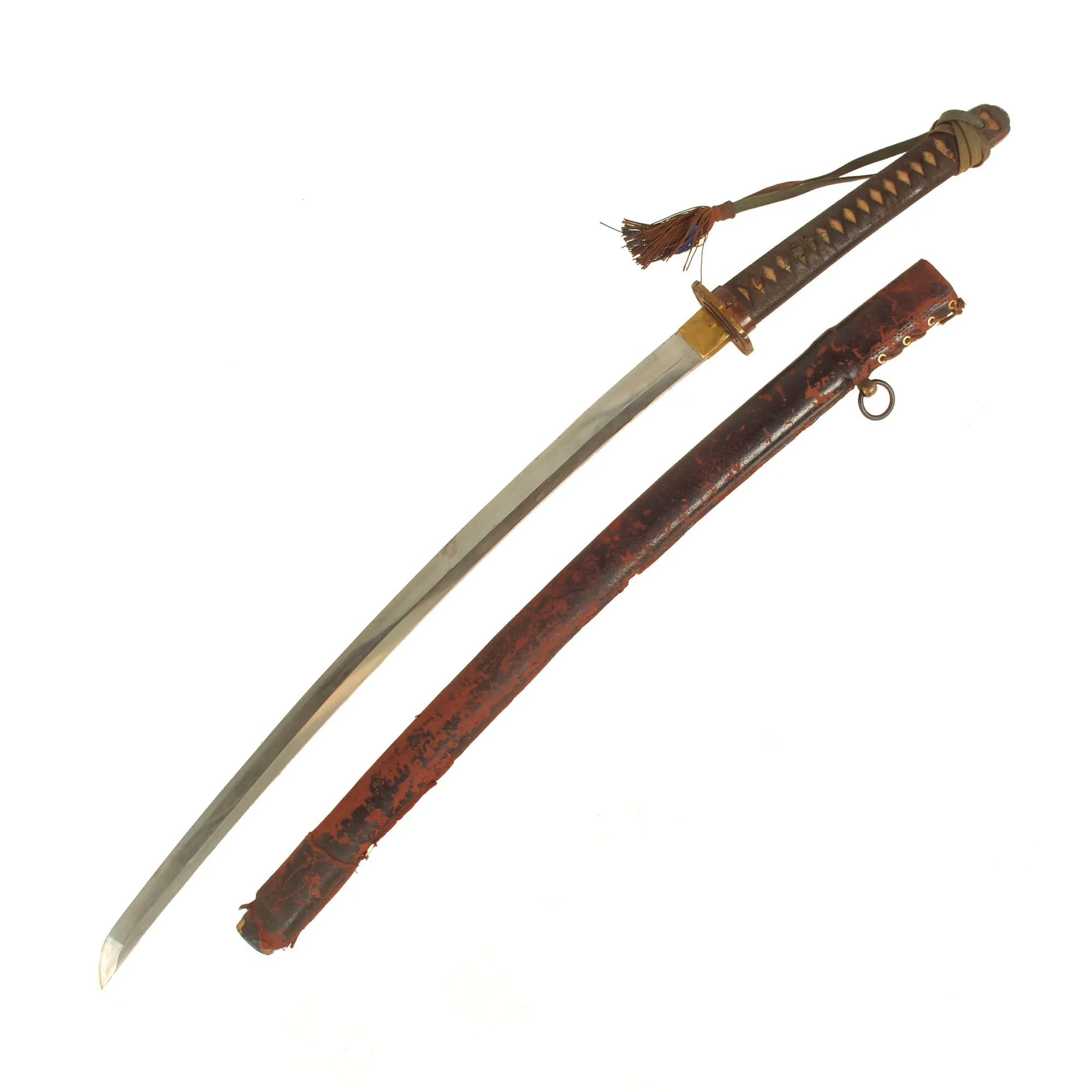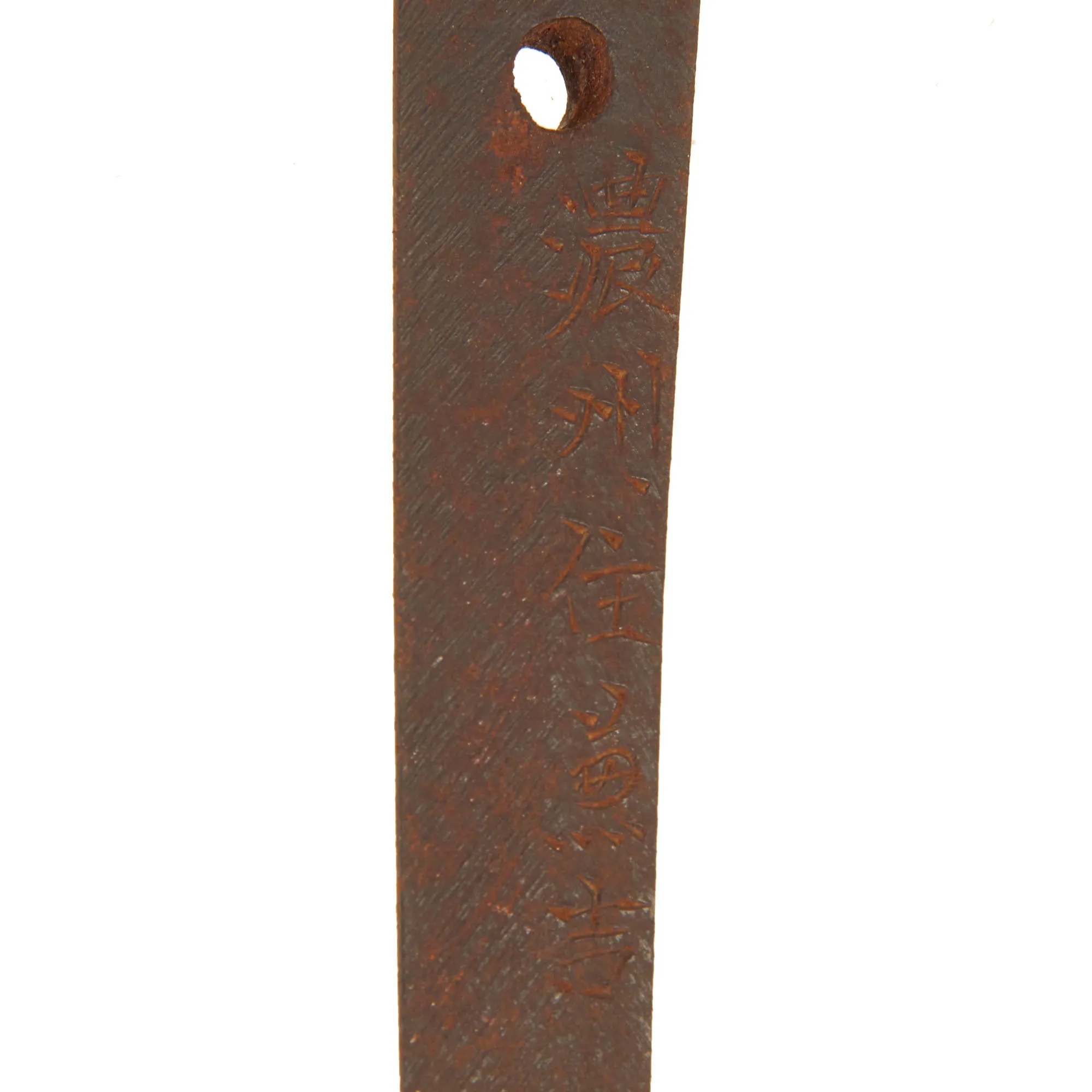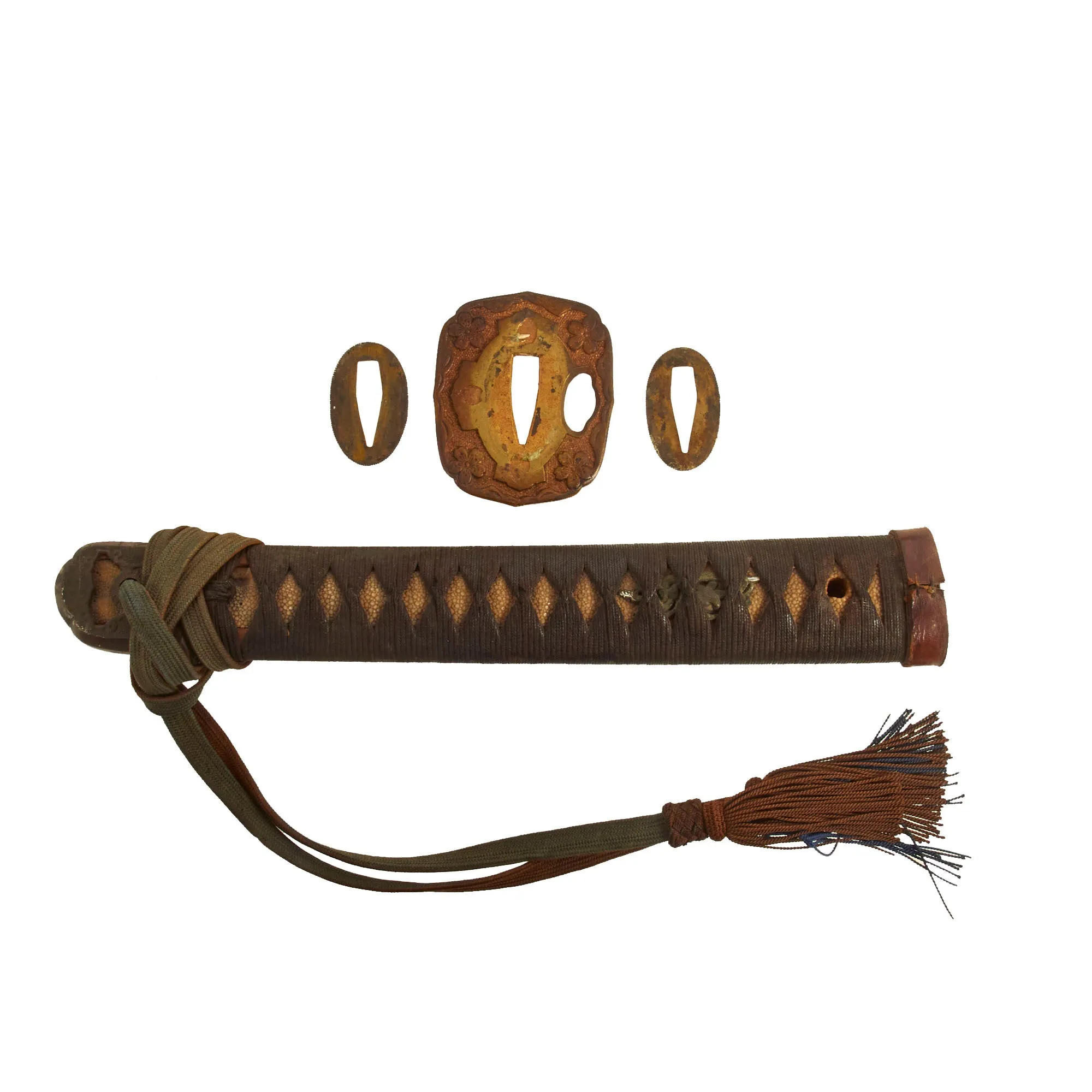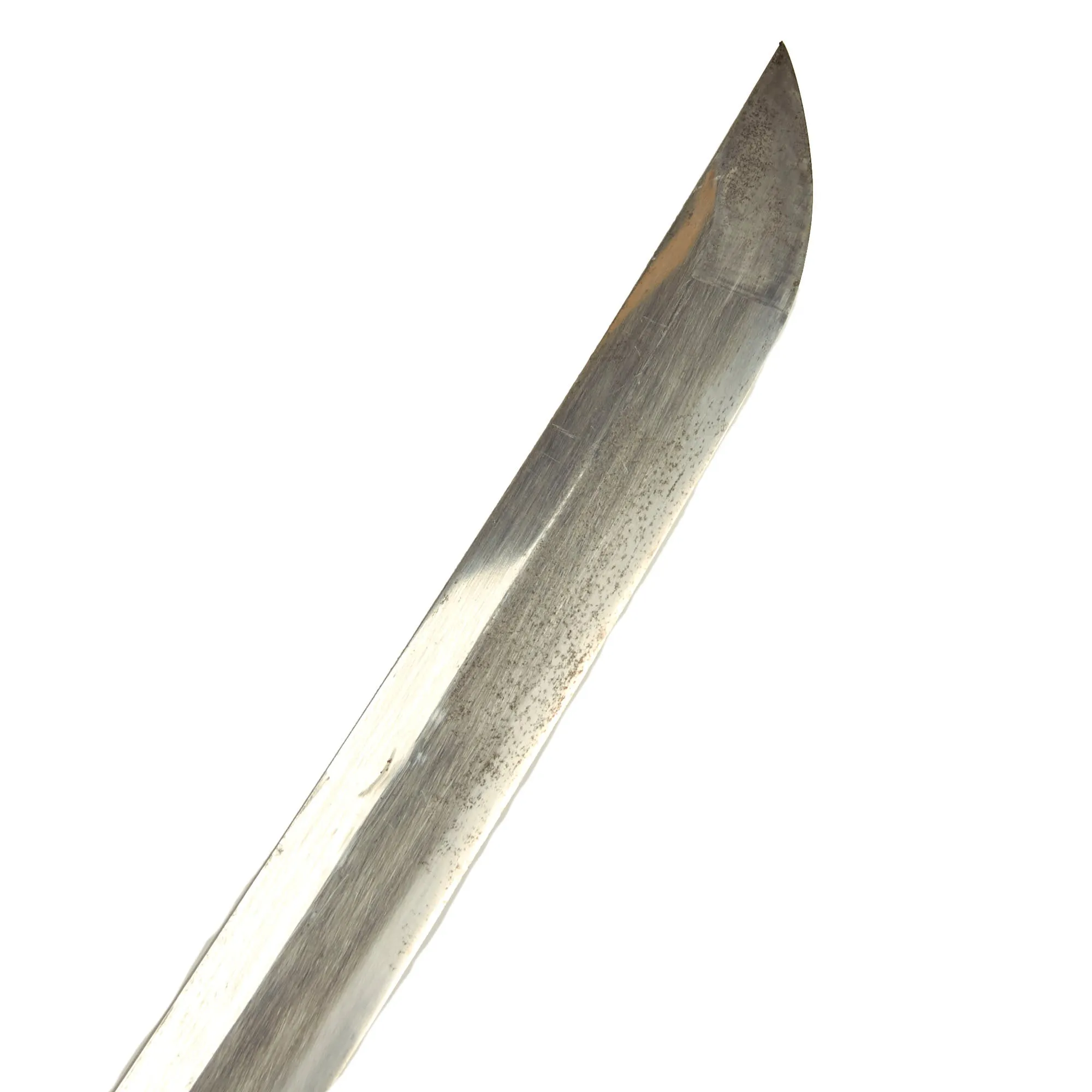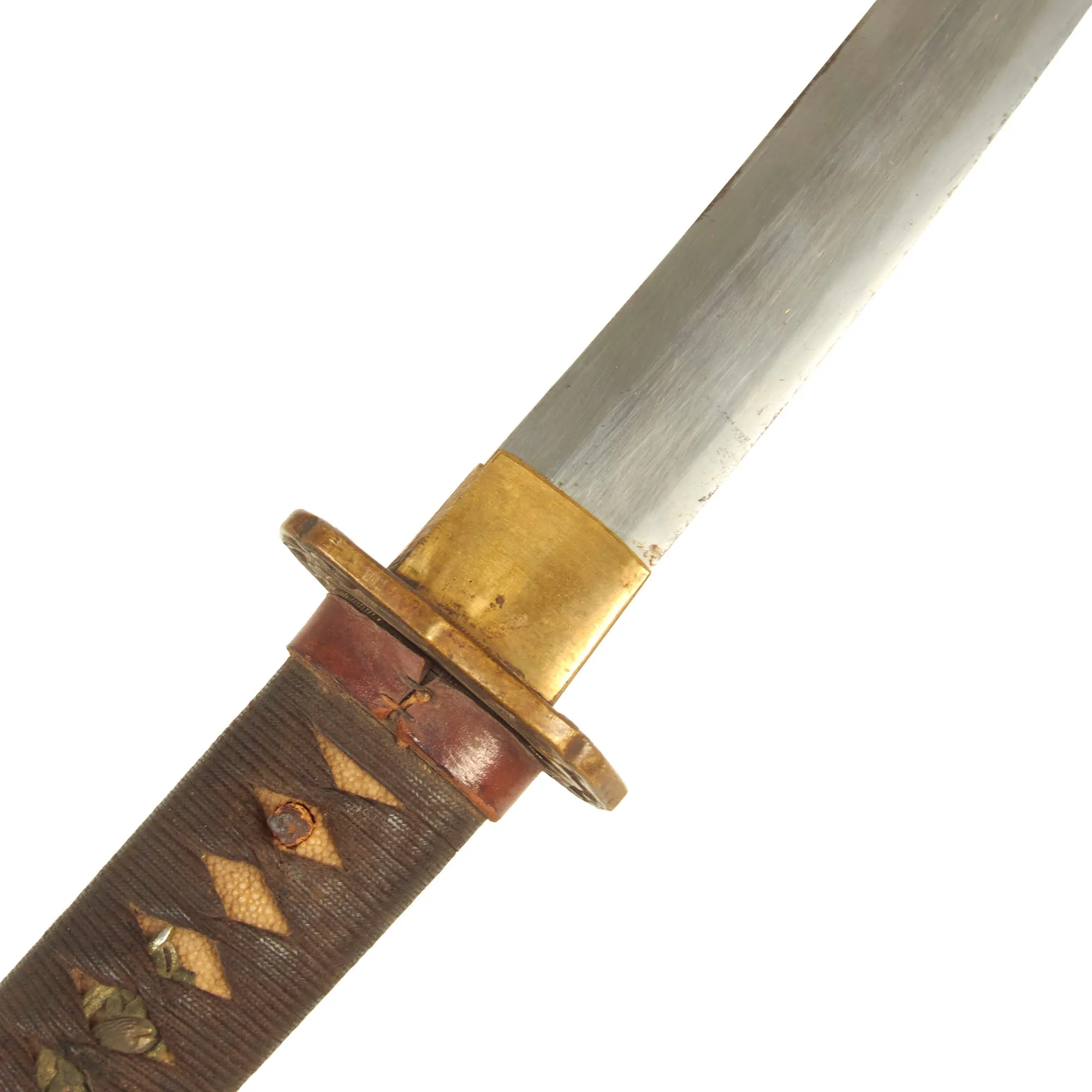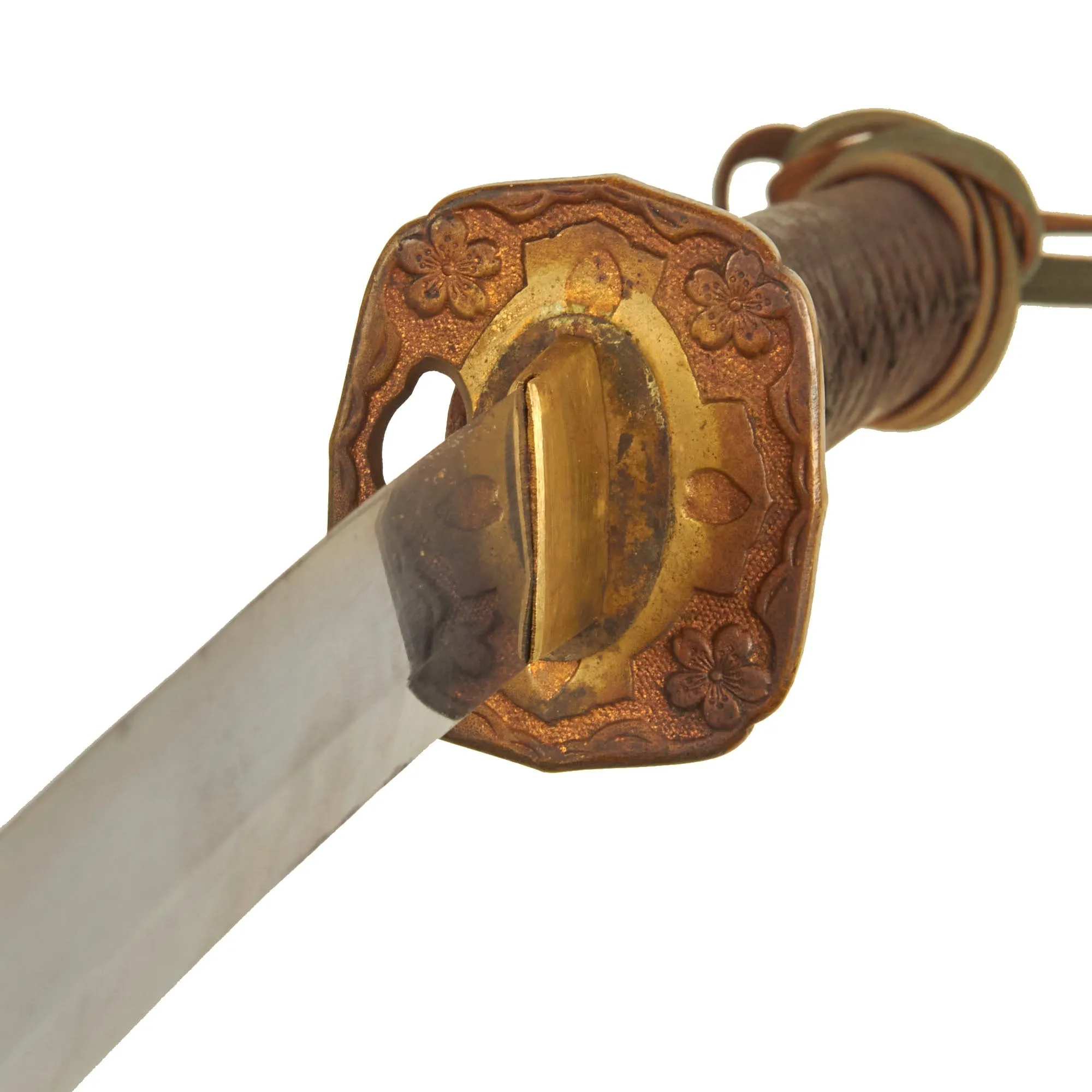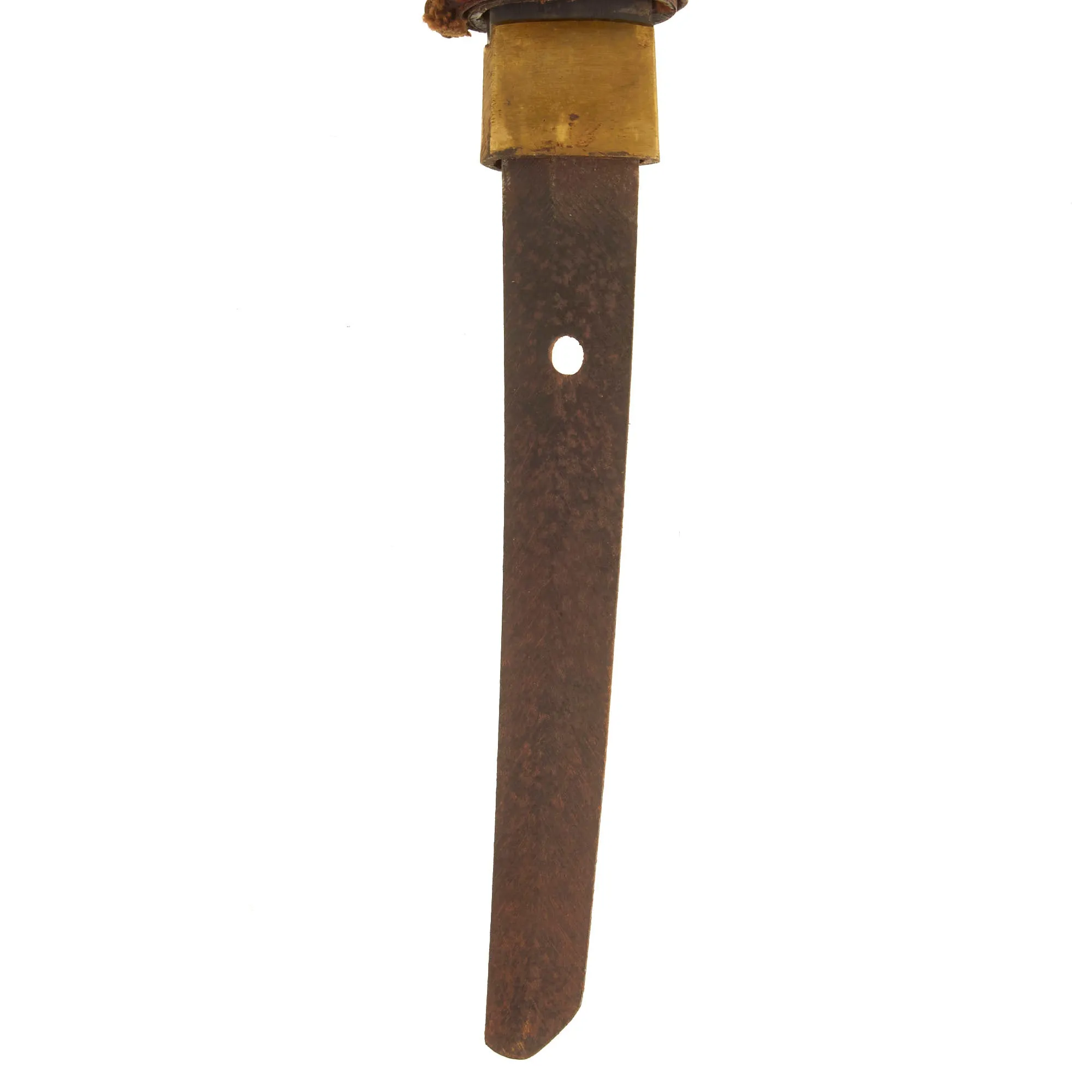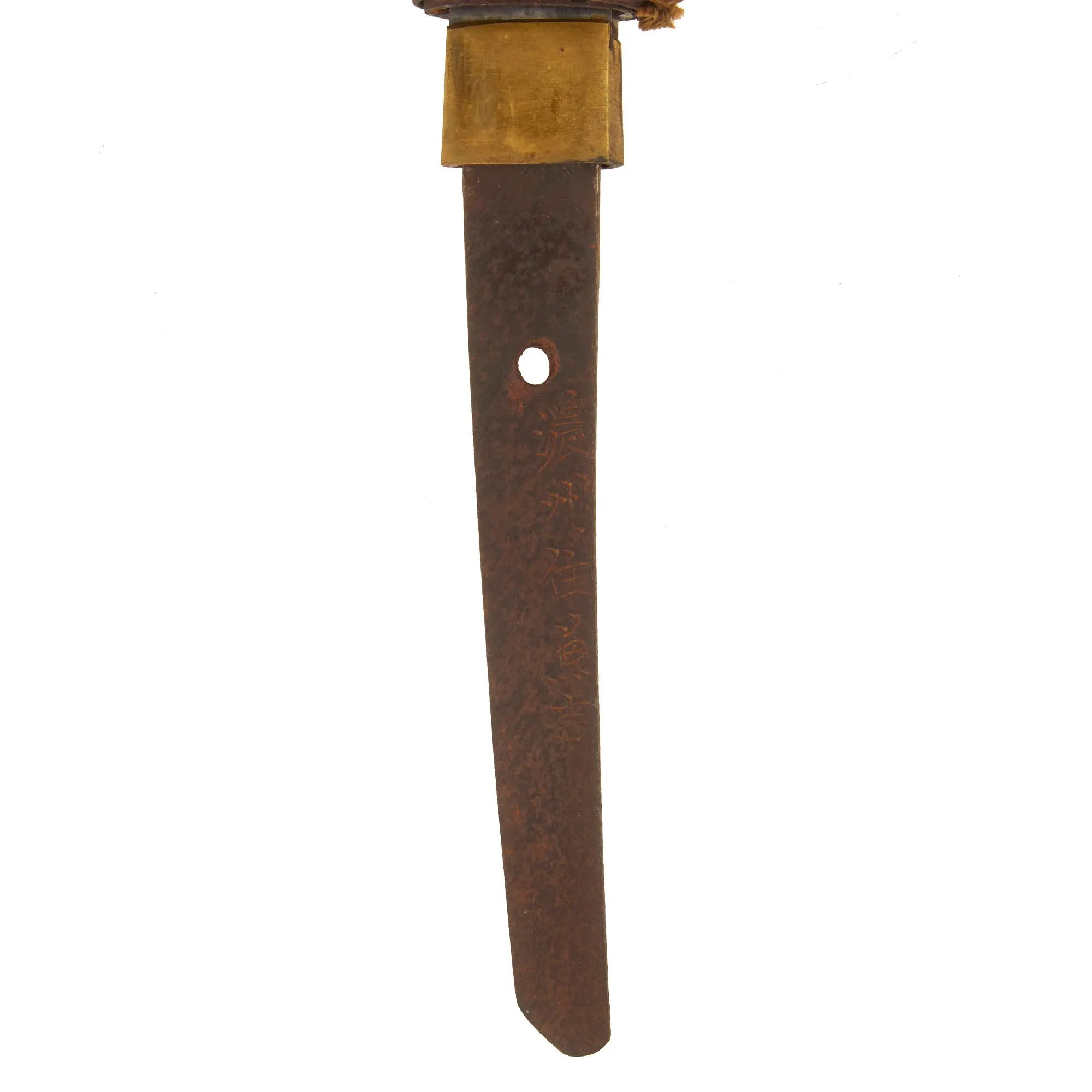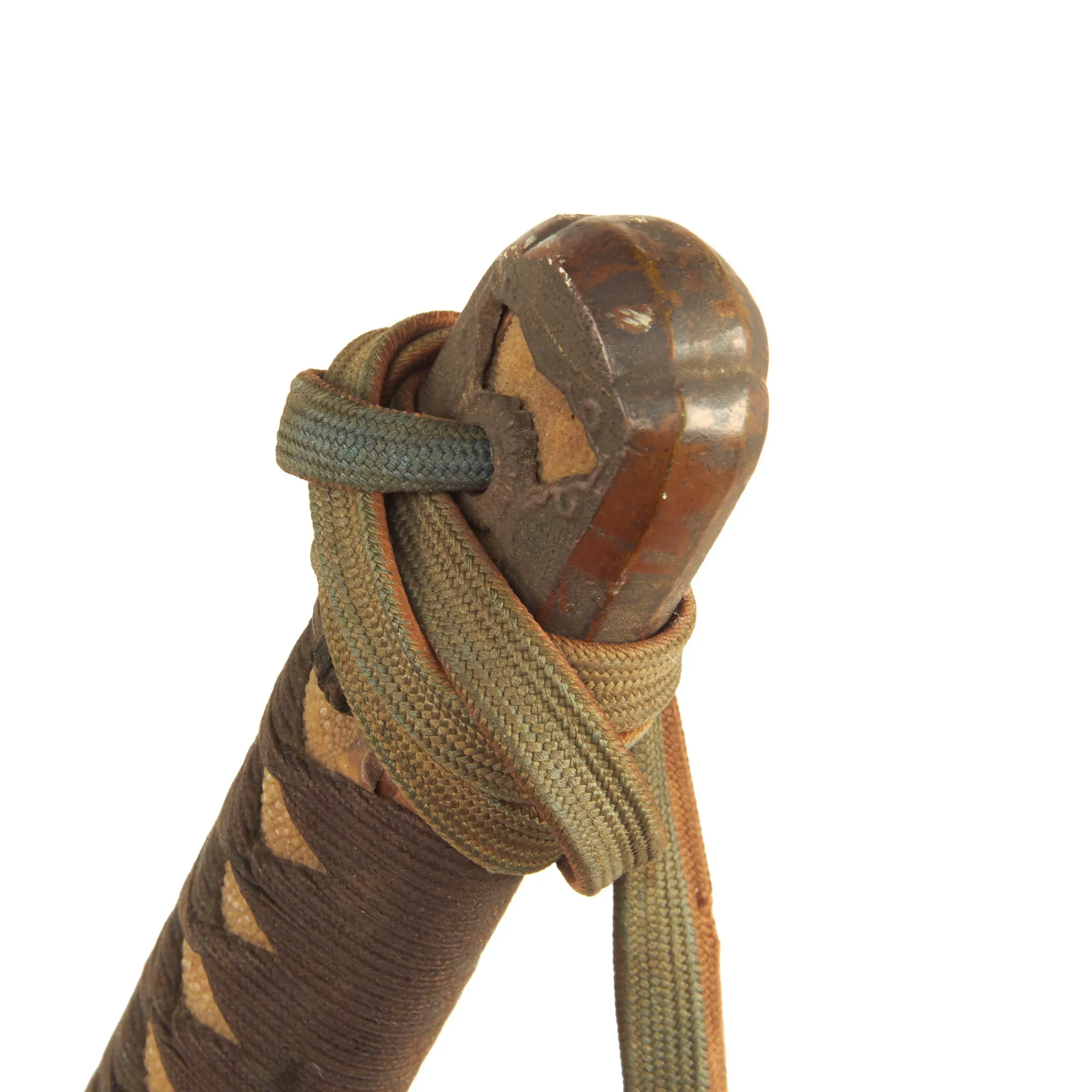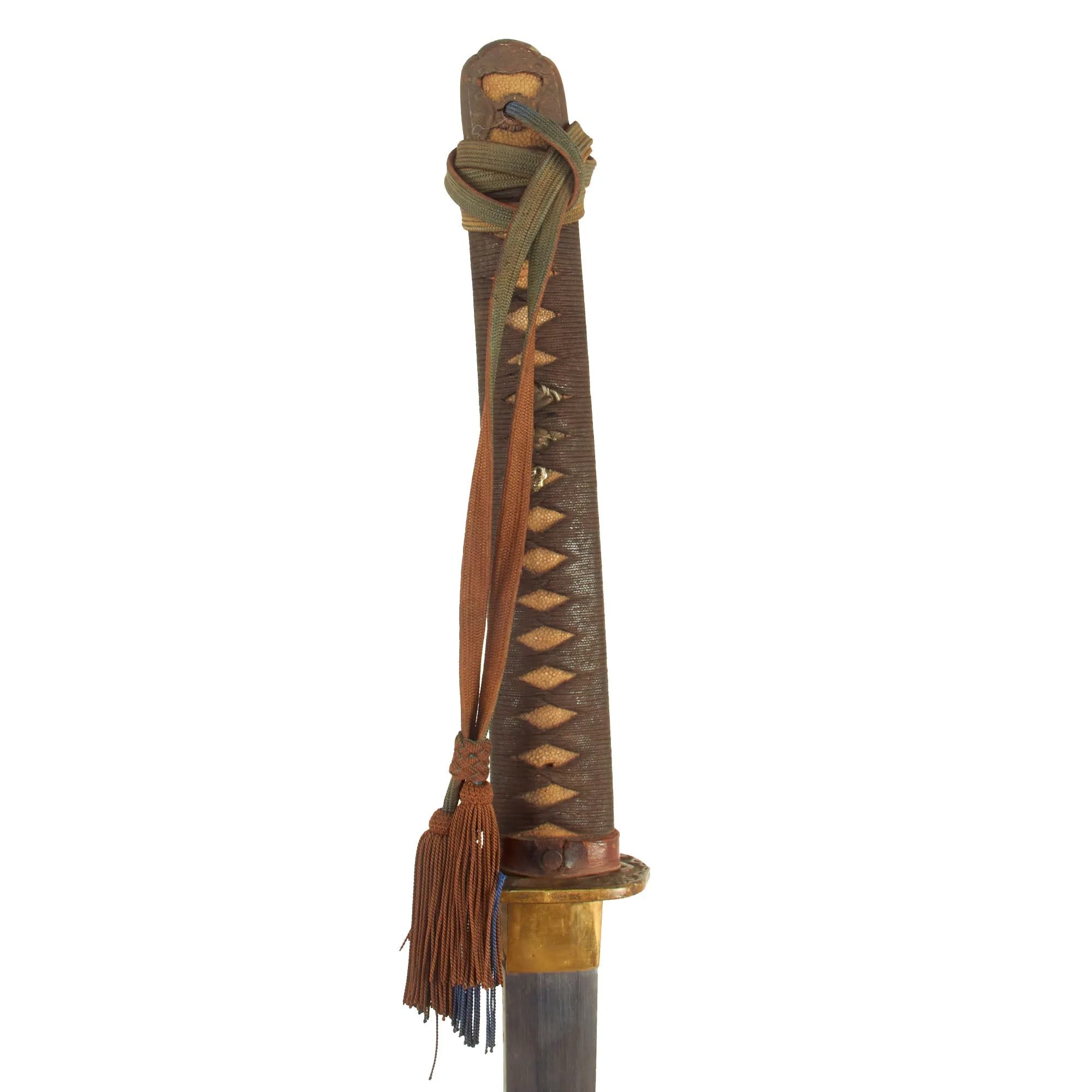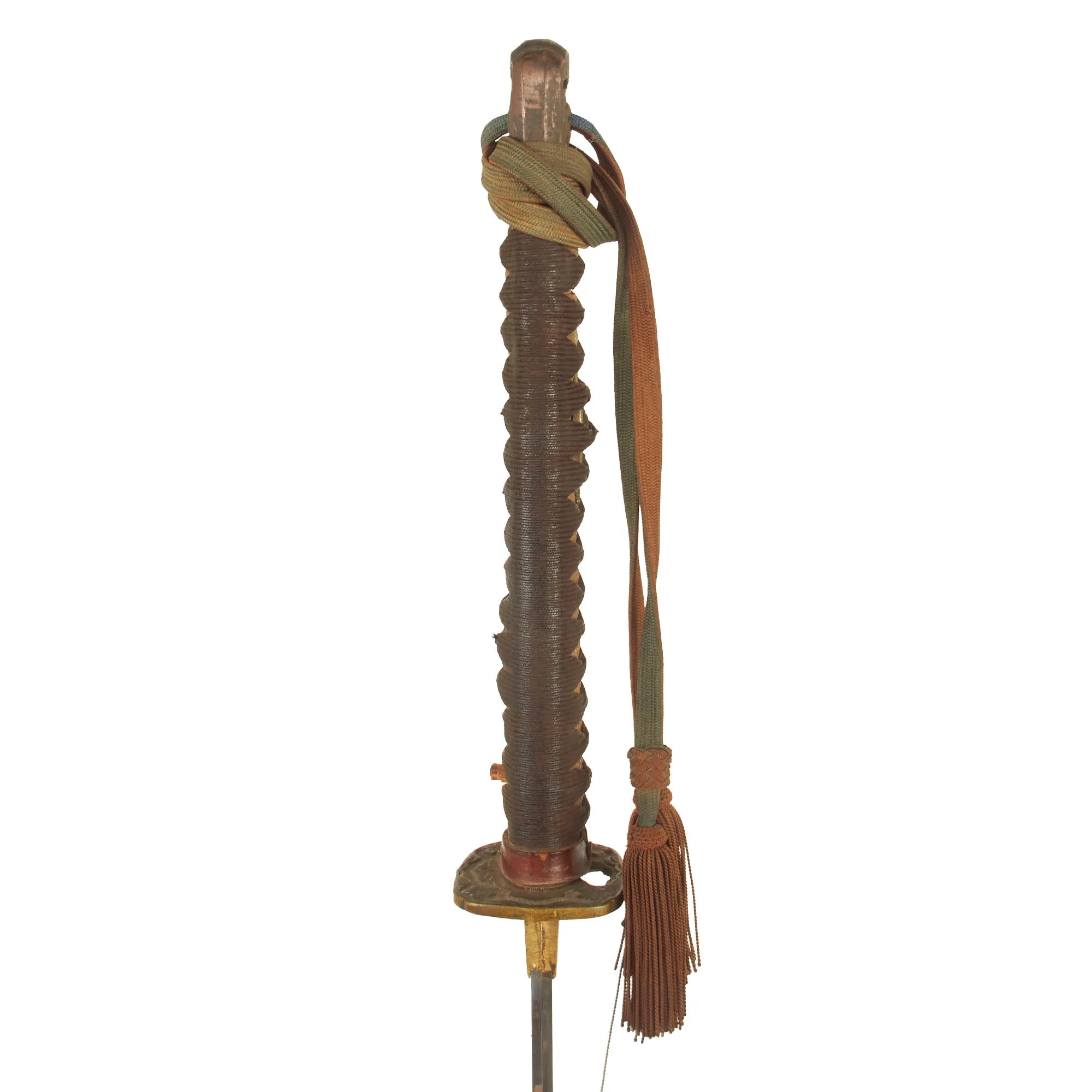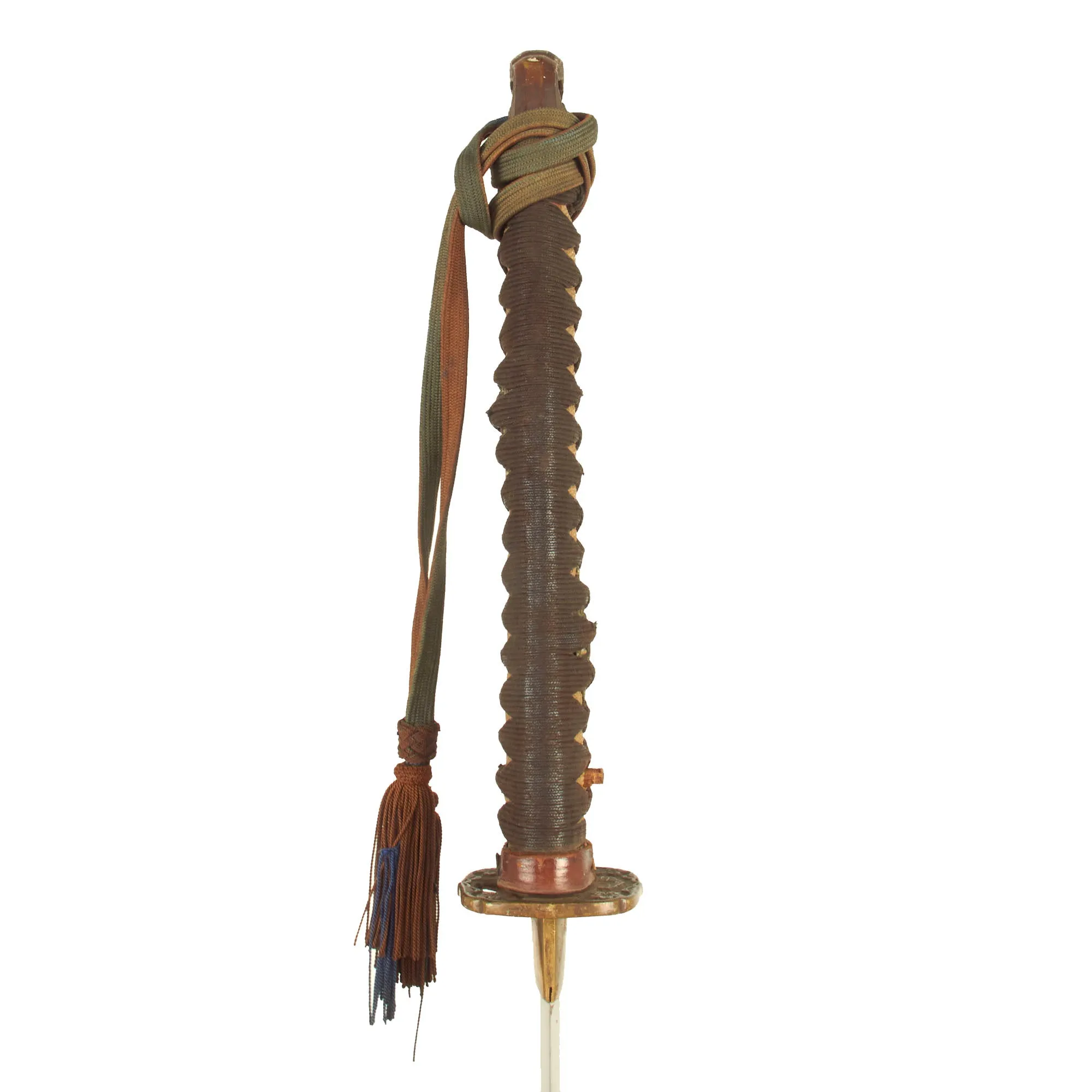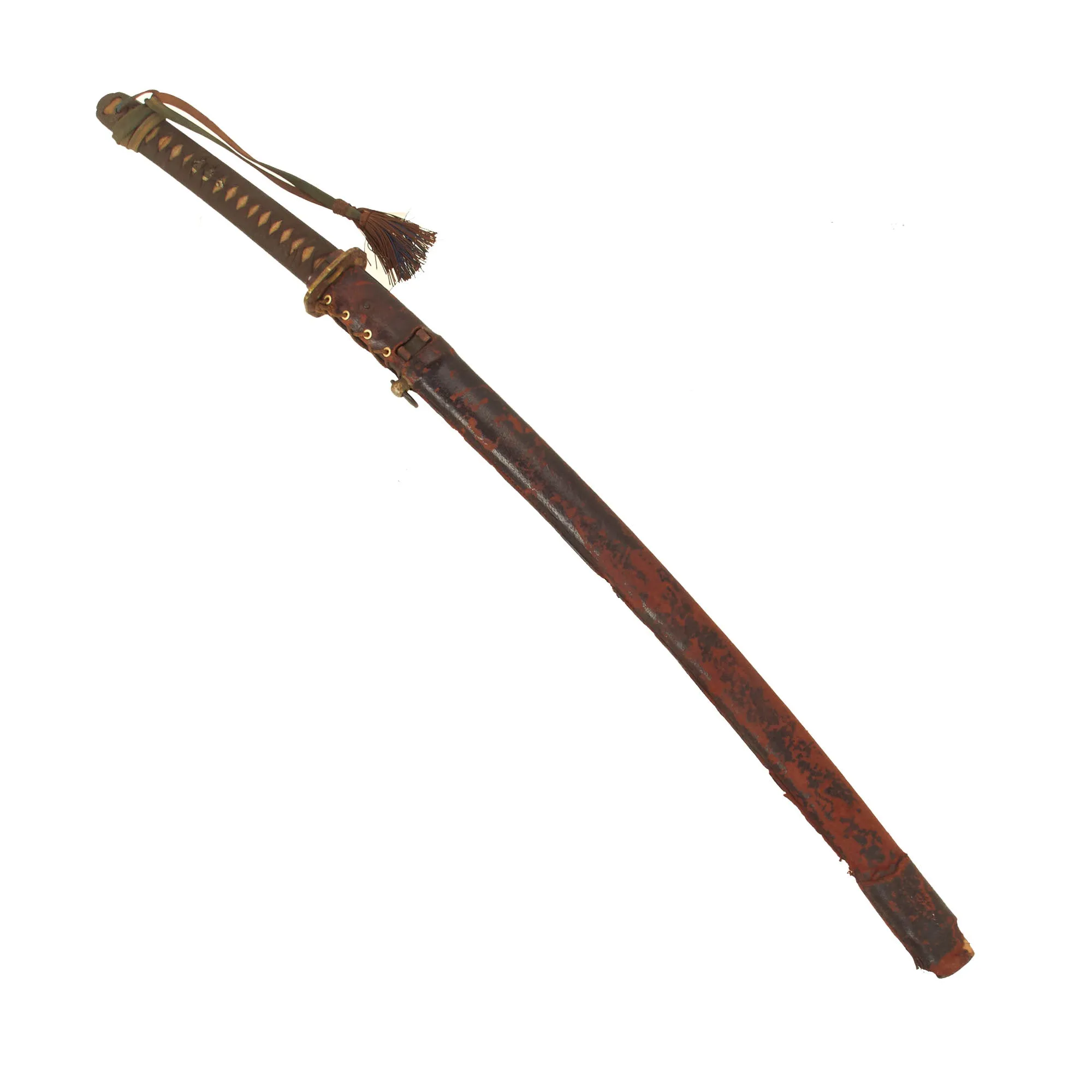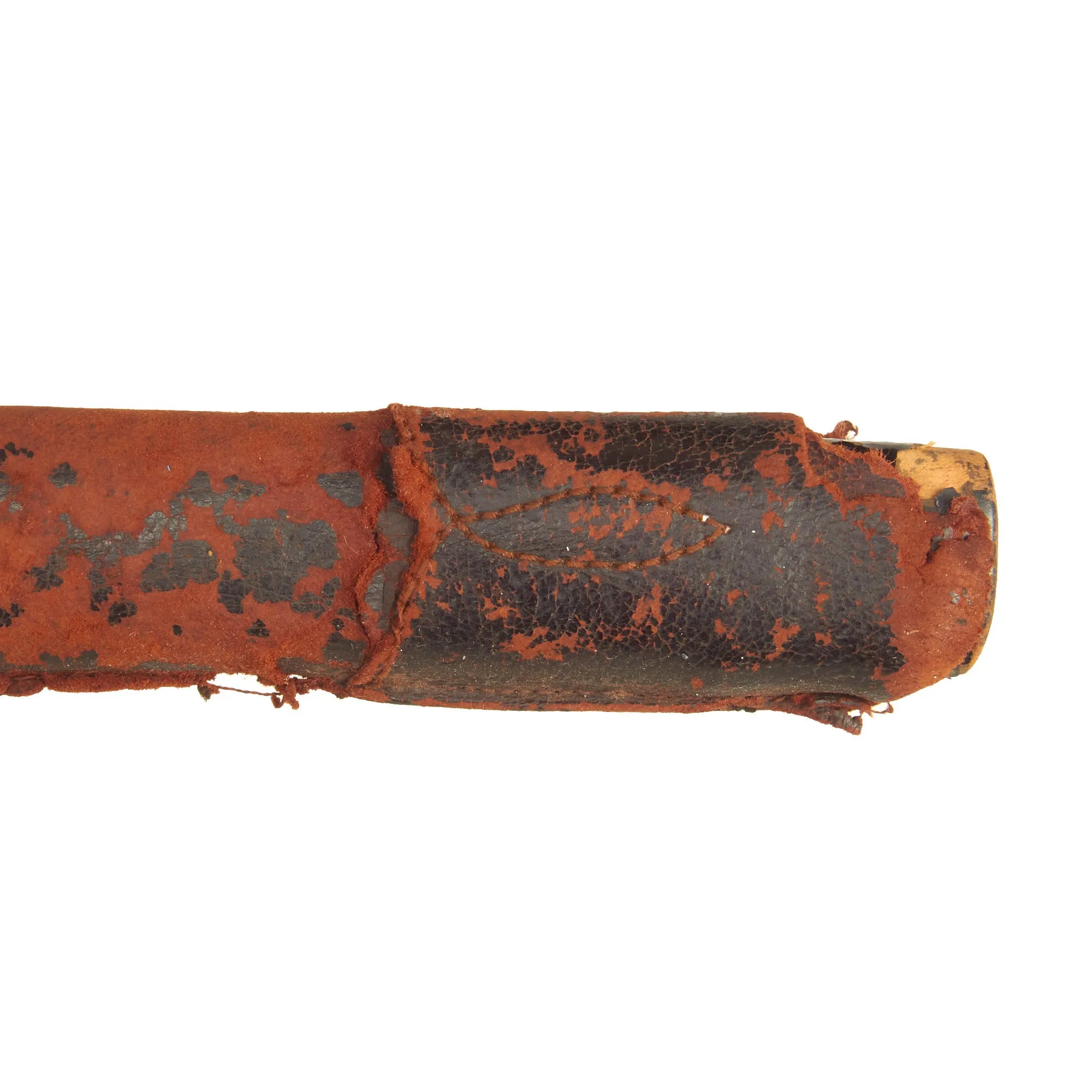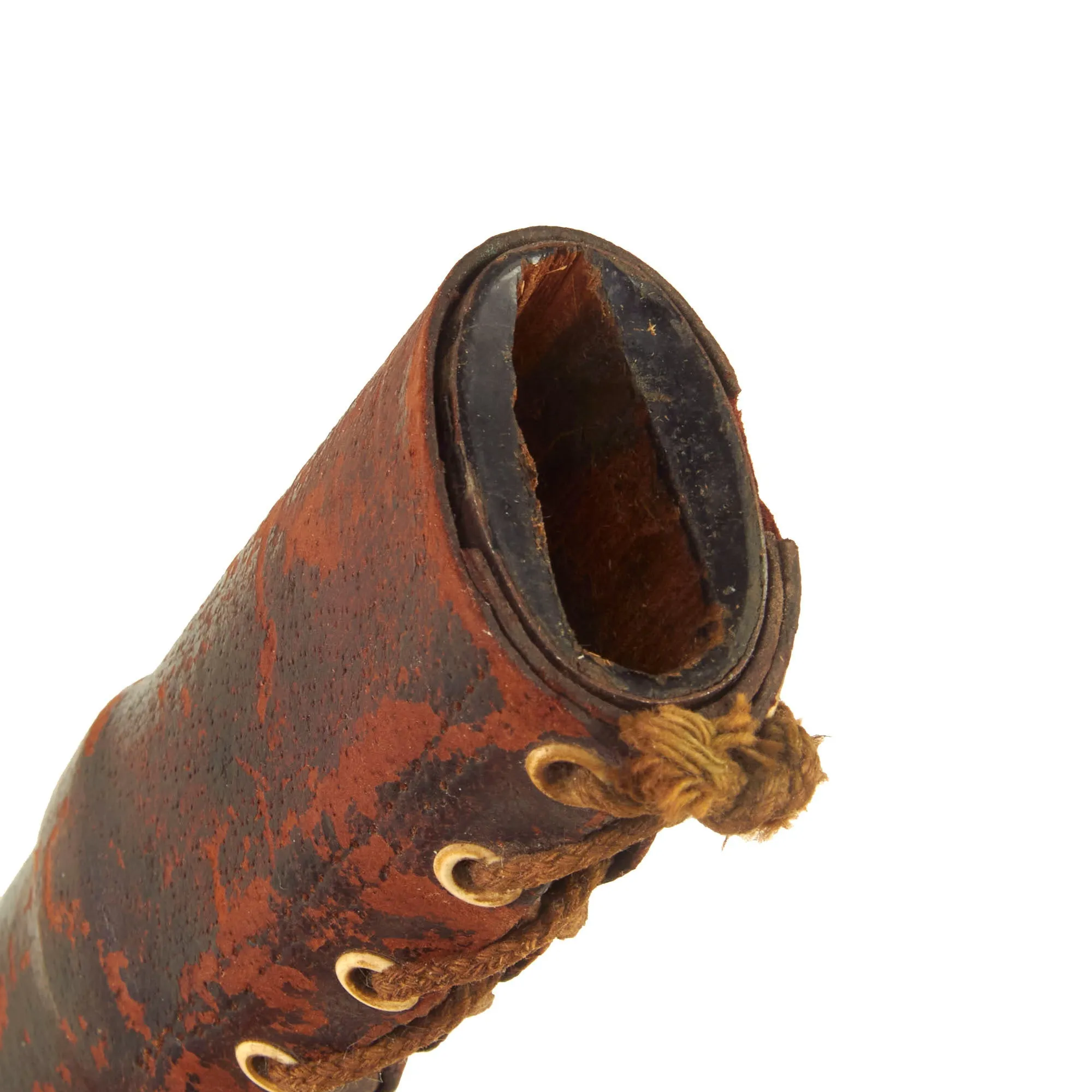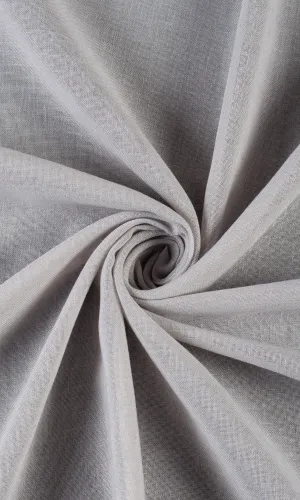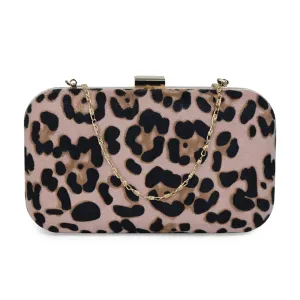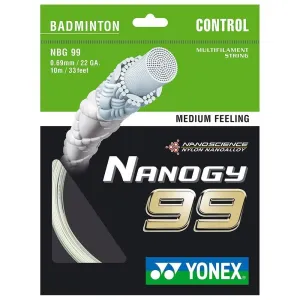Original Item: One of a Kind. Recently purchased at large military show, this is a great USGI Bring-Back wartime production Japanese officer Katana in a "Simplified" Type 98 Shin-Gunto (九八式軍刀 kyūhachi-shiki guntō) setting. These type of fittings (koshirae) are slightly simplified compared to the standard Type 98. The blade tang is signed by the maker, and appears to be handmade in the traditional fashion. A Shin-Guntō (新軍刀, new military sword) is a weapon and symbol of rank used by the Imperial Japanese Army between the years of 1935 and 1945. It also has a very nice company grade officer rank tassel attached to the pommel.
The blade on this example was hand forged in the traditional manner, and the tang of the blade is signed (Mei) with the characters 濃 州 住 兼 吉 - NOSHU JU KANEYOSHI. This means the sword was made by "Kaneyoshi in Mino Province". Kaneyoshi is a very well respected swordsmith name in Japanese history, and during WW2 there were TWO smiths who used the particular "兼 吉" kanji to sign their blades. Unfortunately without their surname, it is not possible to tell the two apart. Both of their names appear in the Seki Tanrensho Booklet printed in 1939, and were active during the Showa Period, working at Seki arsenal in Gifu, Mino Province (美濃国). They look to have made both arsenal forged and traditional blades. Both were also highly ranked compared to most smiths at Seki.
The blade is handmade and was expertly crafted by a sword maker, which is indicated by a few tell-tale characteristics that include:
- Hole in the tang is punched and not drilled.
- Visible temper line ("hamon") with crystallization visible (Nie and Nioi)
- Blade is signed on the tang by the maker ("Mei")
- Blade has a proper geometric Yokote at the tip (kissaki) with a Boshi (tip temper line)
- Blade has wounds ("kizu"), mainly WARE lamination lines.
Offered in very good condition, the blade is still VERY sharp and has a great lightly used look. The edge of the blade is virtually dent and nick free, with no edge bends that we can see. There definitely has been use and cleaning since the last time it was polished, and there is now some scuffing as well as light oxidation staining in areas. Overall polish is good, showing some possible use of an abrasive cleaner like Uchiko ball powder. However the temper line is still apparent throughout the blade in the light. Blade length is approximately 25 1/2 inches and overall length 37 inches.
The katana has a handmade blade with a Futsu Nakago (普通中心 -regular shaped tang) with a Haagari (asymmetrically rounded) nakago-jiri (tang tip). The HAMON (刃文) temper line is easily visible, and is a very attractive and active SUGUHA ( 直刃 - Straight), and aong the transition there are clear NIE crystals visible, with cloudy areas of NIOI in the body of the hamon. The blade has a proper kissaki (tip) with a clear yokote (division between body and tip), which is still clear. The tip temper line (boshi) is partly visible, so we are unable to tell what shape it is.
The blade mountings are a slightly simplified later WWII era Type 98 Army Shin-Gunto style, originally brass with gilt accents, which as with most we see are now faded to an overall orange / brown patina. It has the typical rounded "quince" (mokko gata) shaped tsuba (cross guard), which has a Hitsu-ana hole added for a scabbard locking strap. The base for this strap is still present wrapped around the end of the tsuka, but the securing strap is missing, and the leather is VERY delicate. The menuki on the handle are some lovely silver highlighted designs, not the usual Army Cherry Blossoms.
The end of the handle has a nice Kabuto-Gane (Pommel Cap), which is relatively simple and unadorned. There are 2 metal Seppa (spacers) around the cross guard to keep the fit tight. The blade collar (habaki) is a simple brass design typical of many Type 98s. The handle (tsuka) has a great stingray skin (Sa-Me) grip, with the correct brown Ito (cloth binding). This does show staining from hand sweat and oils, as well as some light fraying in areas, so it definitely did see some real use during the war. The end loop of the tsuka is not present, and the single mekugi (peg) looks to be a later replacement.
Threaded through the pommel cap is a Brown and Blue colored Tassel, which is in very good service worn condition. This signifies that this was carried by a "company grade" officer, which would be a Lieutenant or Captain rank. There is some fading and wear, but no tearing or cuts that we can see.
The Scabbard (saya) on this example is wood, covered with a black finished leather field cover, often seen on swords refit later in the war, as they required far less materials and production time. The leather has unfortunately degraded, and now has dry rot on much of the surface, with the original finish flaking away. It is secured by a cord through four pairs of white eyelets at the top. The scabbard under the cover looks to have been a fairly standard gloss black enameled wooden type, with a brass KOIGUCHI scabbard mouth fitting, and a KURIKATA knob that is now broken off. It has a brass hanger loop and fitting under the cover, and there is a snap on the side for attachment to a leather strap from the handle, which is now missing. The scabbard has a great aged look, but the leather definitely should be handled with care.
A lovely handmade Japanese Type 98 Shin-gunto by a well-known and respected maker, complete with a leather field cover and rank tassel! This is a real USGI bring-back from WWII, ready to display and cherish!
Specifications:
Blade Length: 25 1/2"
Blade Style: Katana
Blade Shape: Shinogi-Zukuri
Overall length: 37“
Scabbard Length: 27 1/4"
It has been over one thousand years ago that the art of making swords appeared in Japan. The swordsmiths of the time may not have known it but they were creating a legendary sword. The Samurai sword has seen combat in many battlefields. From the early days of the Samurai warrior to the fierce battles in the South Pacific during WWII.
Each hand-made Samurai sword is unique because it is forged from folded steel stock. A tremendous amount of work is dedicated to creating these pieces. They were an instrument of war as much as a beautiful artifact to adorn a room.
The Samurai sword has grown to be one of the most highly desired military antiques.

 Cart(
Cart(